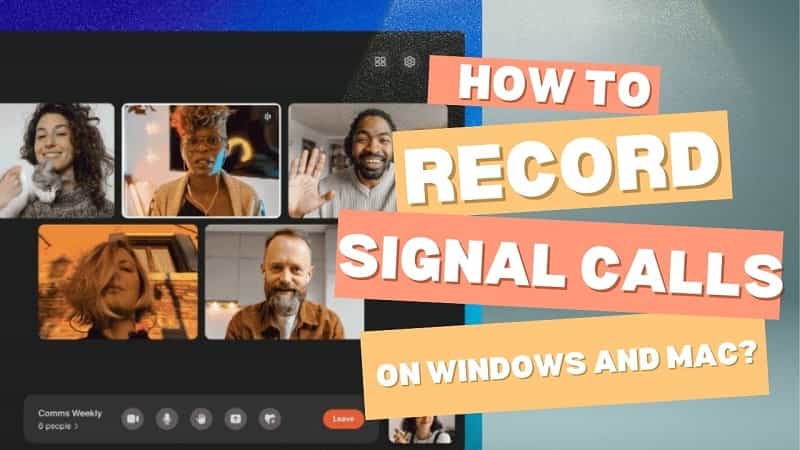Most computers come with built-in voice recording software or apps, depending on the operating system. They are the pre-installed tools that you can directly use without installing. How to use the voice recorder on your computer? What is the best alternative Voice Recorder for Windows and Mac? Here’s a general guide on how to use them on different platforms.
Table of Contents
How to Use the Voice Recorder on Your Windows?
The Voice Recorder on Windows is a pre-installed app designed for capturing audio recordings using your computer’s microphone. Its primary purpose is to allow users to make voice memos, record lectures, and interviews, create audio notes, or capture any other audio content directly on their Windows device.
Key features of Windows Voice Recorder:
- Simple Interface: It offers a user-friendly interface, making it easy for users to start, stop, and manage recordings.
- Basic Recording Controls: The app provides basic controls such as record, pause, stop, and playback.
- Easy Sharing: Once a recording is finished, users can easily share the audio files via email, messaging apps, or other platforms.
- File Management: It stores recordings locally on the computer, usually in a default folder, making it simple to access and manage saved audio files.
- Integration with Windows Ecosystem: The Voice Recorder app often integrates well with other Windows features, allowing for smooth interaction with the rest of the operating system.
Windows Voice Recorder is a handy tool for quick audio recordings without the need for third-party software. However, for more advanced features or extensive editing capabilities, users might opt for dedicated audio recording software with a broader range of functions.
Using the Built-in Voice Recorder:
- Type “Voice Recorder” in the Windows search bar and open the Voice Recorder app.
- Click the “Record” button to start recording.
- Once done, hit the “Stop” button. The recording will be saved automatically with a default name and date.
The Best Alternative for Windows Voice Recorder – RecMaster
RecMaster serves as a significant enhancement over the basic functionality offered by Windows Voice Recorder. While the latter is designed for straightforward voice memos, RecMaster elevates the recording experience by providing advanced features for capturing not only voice but also screen activities simultaneously. With customizable recording modes, and the ability to record webcam feeds alongside screen content and diverse audio sources, RecMaster expands recording capabilities beyond basic voice memos, making it an excellent choice for various content creation needs on Windows systems.
Advantages of the Excellent Alternative to the Basic Windows Voice Recorder
RecMaster serves as an excellent alternative to the basic Windows Voice Recorder for several reasons:
- Enhanced Functionality: Unlike the Windows Voice Recorder’s basic features, RecMaster offers advanced functionalities like simultaneous screen and webcam recording, making it versatile for capturing presentations, tutorials, gaming content, and more.
- Customization Options: RecMaster provides extensive customization options for video and audio settings, allowing users to tailor recordings according to their preferences, which goes beyond the limited settings of the native Windows Voice Recorder.
- Editing Capabilities: While Windows Voice Recorder lacks editing features, RecMaster often includes basic editing tools, enabling users to trim, merge, or annotate the recorded videos before sharing them, enhancing the overall recording experience.
- Reliability and Performance: RecMaster is praised for its stability and low impact on system resources during recording, ensuring smooth and high-quality captures without causing interruptions, which might be more reliable compared to the basic Windows Voice Recorder.
- Frequent Updates: RecMaster’s developers often release updates to improve performance, fix bugs, and enhance features, ensuring the app remains up-to-date and compatible with the latest Windows versions, which might not be as consistently updated in the Windows Voice Recorder.
Using RecMaster to Record Voice with Background Music on Windows
- Click here to download and install RecMaster.
- Click “Other Modes” and choose “Audio Only”.
- Enable the System Sound to record what you can hear from the computer, such as background music, and enable the Microphone to record your voice.
- Choose Advanced on the dropdown list of System Sound or Microphone. Then, you can choose and test the audio devices before the recording.
- You can go to Menu>> Settings>> File to change the Audio Format. Moreover, you can go to Menu>> Settings>> Audio to change the Sample Rate and Bit Rate. The higher the parameters you set for the sample rate and bit rate, the better quality it is, but the file size will be larger.
- When you are ready, you can press the REC button or Alt+1 to start recording.
- To stop the recording, you can press the stop button on the RecMaster window or Alt+2.
How to Use the Voice Recorder on Your Mac?
QuickTime Player on Mac serves multiple purposes beyond video playback; it also functions as an audio recorder. The Voice Memos feature within QuickTime Player allows users to record audio using their Mac’s built-in microphone or an external mic. They facilitate note-taking, interview, and lecture recording for students, journalists, and content creators, serving as a basic tool for capturing spoken content, while also potentially serving as a starting point for simple podcast recordings or ideas.
Key features of QuickTime Player’s Voice Memos:
- Audio Recording: QuickTime Player enables users to record audio directly through their Mac’s microphone. It’s useful for capturing voice memos, interviews, lectures, or any other audio content.
- Simple Interface: It offers a straightforward interface for recording and basic playback controls.
- File Formats: It supports various audio formats for recording, such as AAC, AIFF, WAV, and more, providing options for different quality and file size preferences.
- Editing Capabilities: While it’s primarily a recording tool, QuickTime Player allows basic trimming of audio recordings. Users can cut the beginning or end of a recording before saving it.
- Integration with Mac Ecosystem: Being a native app, QuickTime Player integrates well with other macOS functionalities. For instance, recorded audio can be easily shared through AirDrop, Messages, or other apps, and it’s usually stored in the user’s Movies folder.
However, users might prefer dedicated audio software like GarageBand, Audacity, or Logic Pro X, which offer a wider range of features and functionalities for more advanced audio editing and recording.
Using QuickTime Player:
- Open QuickTime Player from the Applications folder.
- Go to “File” in the menu bar and select “New Audio Recording.”
- Click the red record button to start recording.
- When finished, press the stop button, and the recording will be saved automatically.
The Best Alternative for QuickTime Player – RecMaster Mac
The best alternative for QuickTime Player’s Voice Memos is the RecMaster Mac. RecMaster serves as a robust enhancement over QuickTime Player’s Voice Memos, expanding the recording capabilities beyond basic audio capturing. While QuickTime Player’s Voice Memos focuses solely on recording audio, RecMaster offers a multifaceted approach by enabling users to capture screen activities, webcam feeds, and audio simultaneously. This enhancement broadens the scope of content creation possibilities, providing versatile recording modes, customization options, and additional functionalities, making it an ideal choice for users seeking advanced and multi-dimensional recording experiences on their Mac systems.
Advantages of the Best Alternative to QuickTime Player’s Voice Memos on Mac
There are several compelling reasons why RecMaster is a superior alternative to QuickTime Player’s Voice Memos on Mac:
- Enhanced Functionality: While QuickTime’s Voice Memos focus solely on audio recording, RecMaster offers multi-dimensional capabilities, allowing users to capture screen activities, webcam feeds, and audio simultaneously, catering to diverse content creation needs beyond basic voice recording.
- Versatility in Recording: RecMaster’s various recording modes (Full Screen, Custom Area, Webcam, and Audio Only) go beyond QuickTime’s basic audio recording capabilities, providing users with options for capturing different types of content with greater flexibility.
- Extensive Customization: RecMaster offers extensive customization options for recording settings, such as frame rates, video quality, audio sources, mouse effects, and more, empowering users with control over their recording parameters.
- Editing Tools: While QuickTime’s Voice Memos provide minimal editing options, RecMaster often includes basic editing functionalities like trimming, merging, and annotations, allowing users to refine their recordings before sharing.
- Performance and Stability: RecMaster is recognized for its stable performance on Mac systems, providing high-quality recordings with minimal impact on system resources compared to QuickTime’s basic recording functionalities.
- Integration and Compatibility: Although primarily designed for Windows, RecMaster also offers Mac versions, ensuring compatibility with the macOS ecosystem, and providing an alternative for users seeking advanced screen recording features along with audio capture on Mac.
Using RecMaster Mac to Record Voice with Background Music on Mac
- Click here to download and install RecMaster. Then, register an account.
- Before starting RecMaster, please ensure that you have no problem hearing sounds from the computer and using your microphone. (Choosing the right default input and output devices.)
- Then, start RecMaster and click the “Audio Only” mode. The default devices will be changed automatically.
- Turn on the System Sound to record the computer audio, and enable the Microphone to record your voice. You can also choose the output audio format.
- Pressing the “REC” button, you can start the recording. You can also start it with Command+1.
- To stop the recording, you can use Command+1 or the stop button. The recorded audio will be in the file list.
- Other than the general audio recording features, you can also set tasks to start and stop recording automatically.
Conclusion
Remember, the exact steps might vary slightly based on the version of the operating system or any updates to the software. Always refer to the specific instructions or help guides provided by the system or application for more accurate information.
And yes, unless you delete the recording intentionally, most voice recorder apps will save the recorded audio files by default. Moreover, when you have problems with the native voice recording tools on Windows and Mac, or you hope for advanced features, you can use the best alternative for the native voice recorder, RecMaster.

RecMaster
Screen recording made easy.
Record every moment on your PC or Mac within few clicks.
Download Download-
How to Screen Record Final Fantasy 7 Rebirth On PC?
-
How to Record Signal Calls on Windows and Mac?
-
How to Record Screen on Gateway Desktop?
-
How to Record Webcam in 9:16 Aspect Ratio on PC?
-
How to Screen Record Flash Games?
-
How Do I Record in 1080 x 1920 Dimensions on PC?
-
Can I Record a Meeting While Wearing Headphones on Computer?
-
Deleted the Wrong Video
-
How to Set Passwords for RecMaster with My Lockbox?
-
How to Screen Record on an ASUS VivoBook Laptop?
-
How to Record Black Myth: Wukong?
-
How to Record Filmzie on PC and Mac?
-
How to Create New Employee Onboarding Videos with RecMaster?
-
How to Make A Product Demo Video with A Screen Recorder

RecMaster – Record Every Moment on Your Computer Screen
Record 1080p or even 4K clips at 60fps to maintain the high quality still.
Flexible settings for mouse cursor effects, watermark and annotations.
Preloaded with recording scheduler, video editor. Allow one-click sharing.
Related & Hot Articles
Subscribe to keep up with the latest software discounts , news, and updates.



